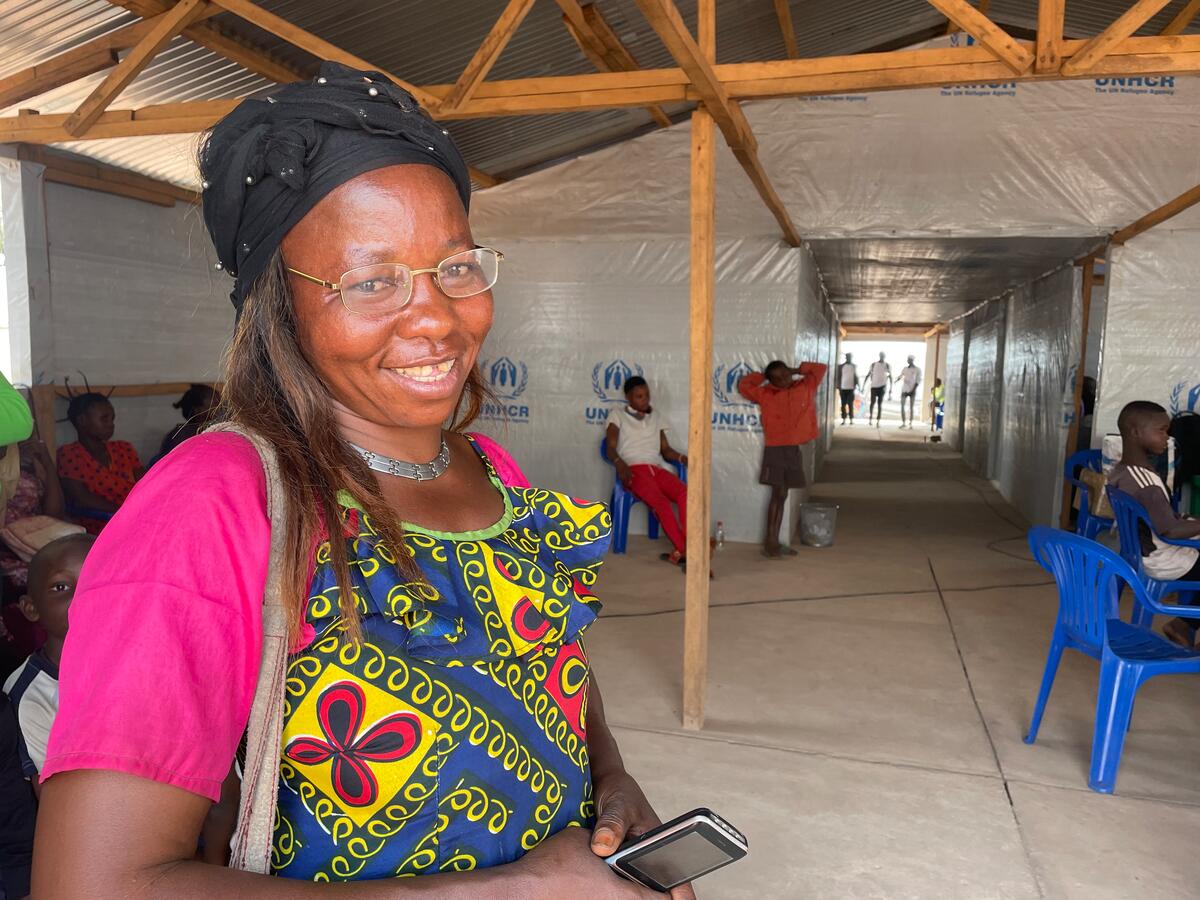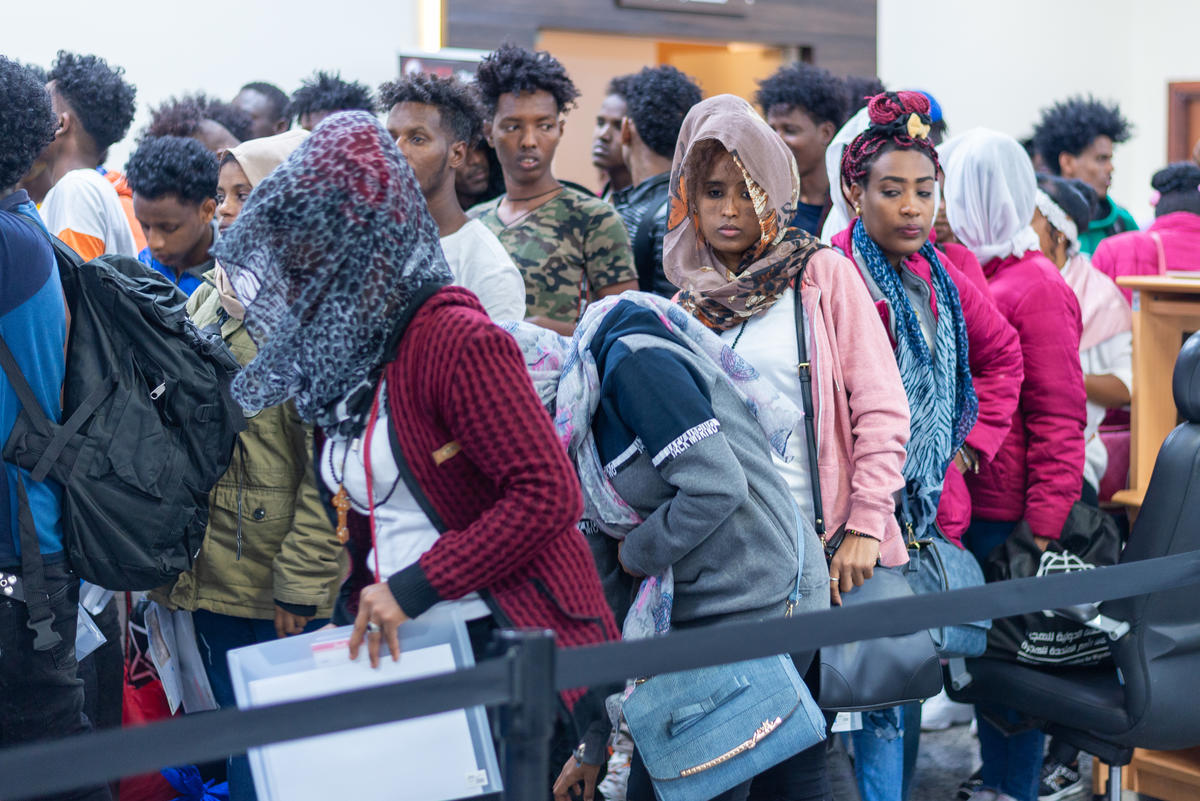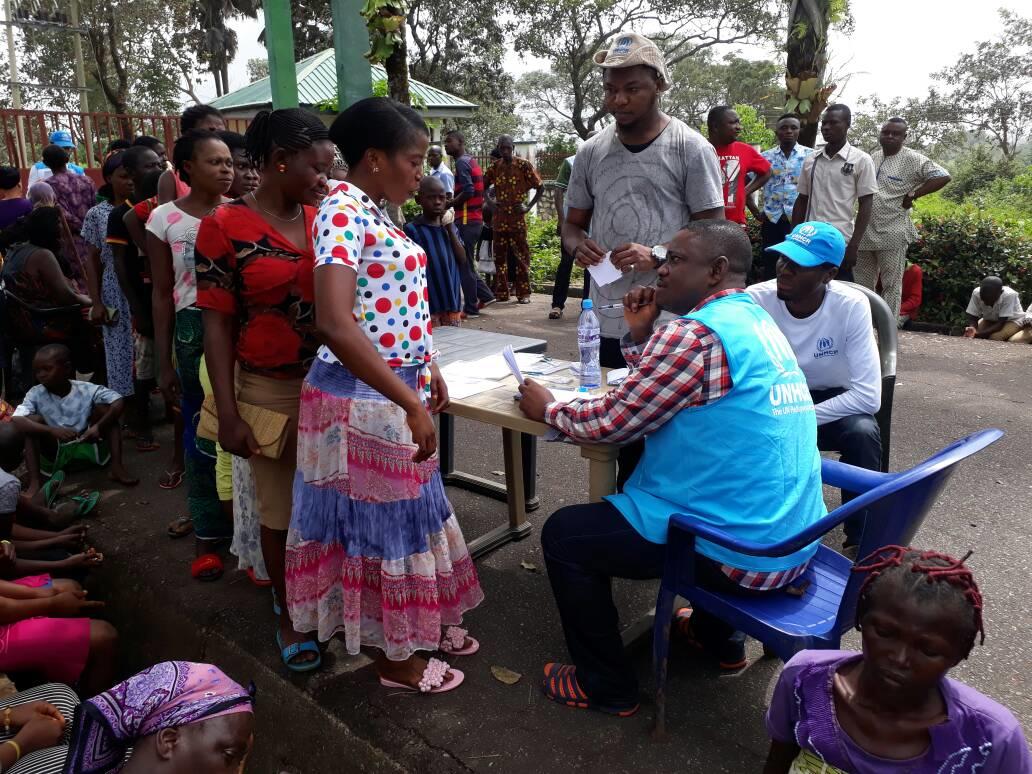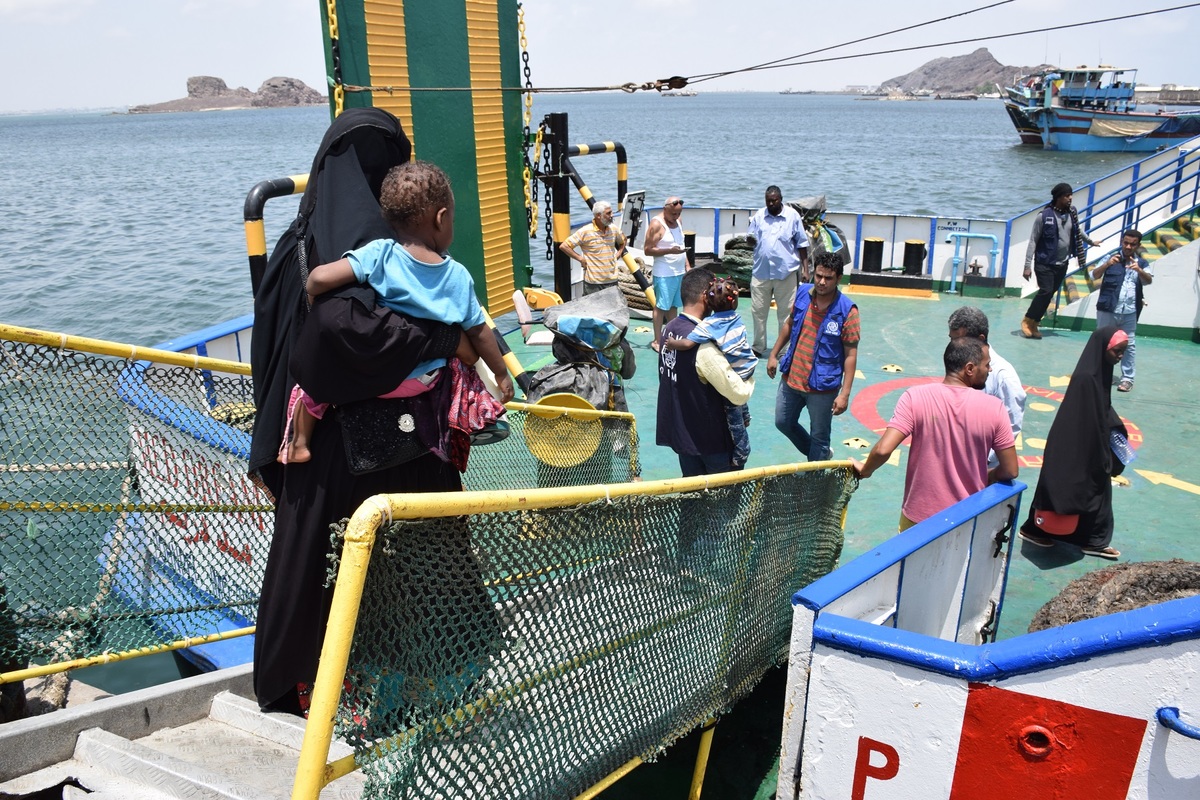Angolan refugees face difficult route home across vast, devastated land
Angolan refugees face difficult route home across vast, devastated land

M'BANZA CONGO, Angola, October 3 (UNHCR) - When a country is more than twice the size of France, is littered with mines and has seen its roads disappear during decades of war, getting refugees back to their homes is not an easy task.
"All I want is to go back to my village now that my sight is no good and I can't work," said Francisca Suzana, one of the last group of 236 Angolan refugees at the UN refugee agency's Kiowa Reception Centre who have been awaiting air transport to their villages in remote areas of Angola.
"I have been here for three weeks, but I am not complaining," said the woman who fled from the west-coast city of Lobito, in Angola's Benguela province, to the neighbouring Democratic Republic of the Congo (DRC) in 1975, during the struggle for independence. "I waited for so many years - I can wait a bit more."
Each day, small groups of the refugees remaining at the Kiowa Reception Centre, located at M'Banza Congo, capital of Angola's Zaire province, gather around UNHCR officials to ask when they are going to be taken home.
These 236 Angolans are the last of the 2,500 who returned in August and September in an organised manner from settlements in Kasangulu, in the western part of the DRC. But the task of taking them as close to home as possible is far from simple.
They come from 15 of the 18 Angolan provinces - excluding only Zaire, Cabinda and Luanda provinces - and are headed to the south, east and west of country that is 1,246,700 square km (larger than Germany, France and the United Kingdom combined).
Travelling overland in convoys from Kiowa - like the more than 2,000 other refugees who have passed through this reception centre - is not an option for the remainder. The reasons they cannot go by land vary from roads that are still closed because of the risk of landmines, to ones that are in theory open but in reality all but impassable after 27 years of war, destruction of bridges and no maintenance.
The news that they will be airlifted to the Central Highlands city of Huambo has alarmed some of the refugees, who have never been on an aeroplane. From Huambo, transport to their villages will be provided either by the International Organization for Migration (IOM), UNHCR or the Angolan Army working together with the ministry of Social Affairs and Reintegration.
"UNHCR has been able to bring the returnees to Zaire, Uíge and even Bengo provinces by road," said Jaboc Tsehaye, head of UNHCR's sub-office in M'Banza Congo who is in charge of the voluntary operation in the northern region.
"But some will have to be airlifted and part of this group has been waiting for a month. I recognize they have been stressed, but to organise airlifts we depend on other agencies and private planes," he said, adding that he hoped the planes would become available in early October.
Tsehaye previously worked in Afghanistan, where the ongoing organized repatriation is the largest in UNHCR's history, but returning Afghans were generally able to make their own way across the arid country.
According to Gregoria Keita, a UNHCR field officer, the returnees from Kasangulu arrived in poor condition and cases with tuberculosis, hypertension and parasites were being treated in the health clinic at Kiowa.
"I am calmer now, waiting a bit more to go home. But the nerves are hard to contain," said Coimbra Monteiro, who suffers from high blood pressure and had a crisis when he arrived in Kiowa after 30 years in Kasangulu. He sits by the entrance of his tent talking to friends or watching Angolan television at night.
His decision, at the age of 66, to return to his home province of Malange meant leaving behind his Congolese wife of many years who was afraid to start a new life. He also left two sons and two daughters. Only one daughter - "the one who loves me the most" - followed him.
For Francisca Suzana, who is the head of her family after the death of her husband in exile, the return to her home will complete an odyssey. She fled to escape the war and supported her family "with the kíngula [a big basket] on the head, selling fish to keep the kids in the school".
Suzana brought her four children first to Soyu, in the province of Zaire and then into the Democratic Republic of the Congo. Two of her children have since died and she was being escorted home by a grandson who has decided to try his luck in Angola, a homeland he has never known.
"I left young and come back as an old woman," she said, waiting patiently in Kiowa for the final stage of her return home to begin. "But that was my first opportunity."
By Maria Benevides







